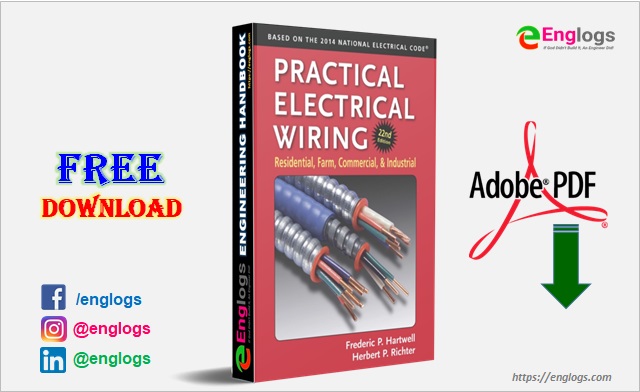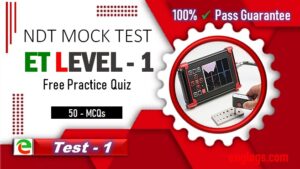Non-Destructive Testing: Sample Questions for Conduct of Examinations at NDT PT Levels -1
Liquid Penetrant Testing Level -1 (PT-1) General Examination Part-2
Take unlimited free Quiz Course tests of any length. We have free new questions updated every week and you can study our material along with any other study materials.
Here You Can Take a Free Online NDT PT Level -1 Exam Practice Test and Improve Your NDT PT Level -1 Penetrant testing Exam Score. Here You Can Learn everything you need to know about NDT PT Exam.
-
(pdf) Wiring a House 4th Edition

Wiring a House 4th Edition for pros by pros Rex Cauldwell. The writer is pleased that Wiring a House has become a standard reference for engineers, pro electricians, and DIYers. He believes this new edition will prove to be a helpful resource for answering those head-scratching questions that often plague wiring jobs. This new edition…
-
(pdf) International Electrical Safety Practices

Handbook of International Electrical Safety Practices by Princeton Energy Resources International. The handbook is an assemblage of best international management practices for the safe handling operations of personnel working in generation, transmission, and dealing with power distribution issues. It is intended as a practical desk reference to which technicians, engineers, supervisors, line personnel, and business…
-
(pdf) Transmission, Distribution, and Renewable Energy Generation

Transmission, Distribution, and Renewable Energy Generation Power Equipment Aging and Life Extension Techniques, Second Edition by Chudnovsky, Bella. this book provides info about issues of the reliability and safety of electrical apparatus and supporting equipment in the expanding field of renewable energy generating technologies: solar, wind, tide, and wave power. The review of aging factors…
-
(pdf) Transformer and Inductor Design | 2024

Transformer and Inductor Design Handbook by Colonel William T. McLyman. This book offers a practical approach with design examples for design engineers and system engineers in the electronics industry, as well as the aerospace industry. While there are other books available on electronic transformers, none of them seem to have been written with the user’s…
-
(pdf) Practical Wiring Residential, Commercial and Industrial

Practical Electrical Wiring Residential Farm Commercial and Industrial by Frederic P Hartwell and Herbert P Richter 22nd Edition. The scope of this book has been limited to the wiring of structures of limited size and at ordinary voltages, at 600 volts or less. Skyscrapers and steel mills and projects of similar size involve problems that…
- (pdf) Wiring a House 4th Edition
- (pdf) International Electrical Safety Practices
- (pdf) Transmission, Distribution, and Renewable Energy Generation
- (pdf) Transformer and Inductor Design | 2024
- (pdf) Practical Wiring Residential, Commercial and Industrial
PT Level 1 :: NDT Mock Test Practice Quiz MCQ’s Part-2



